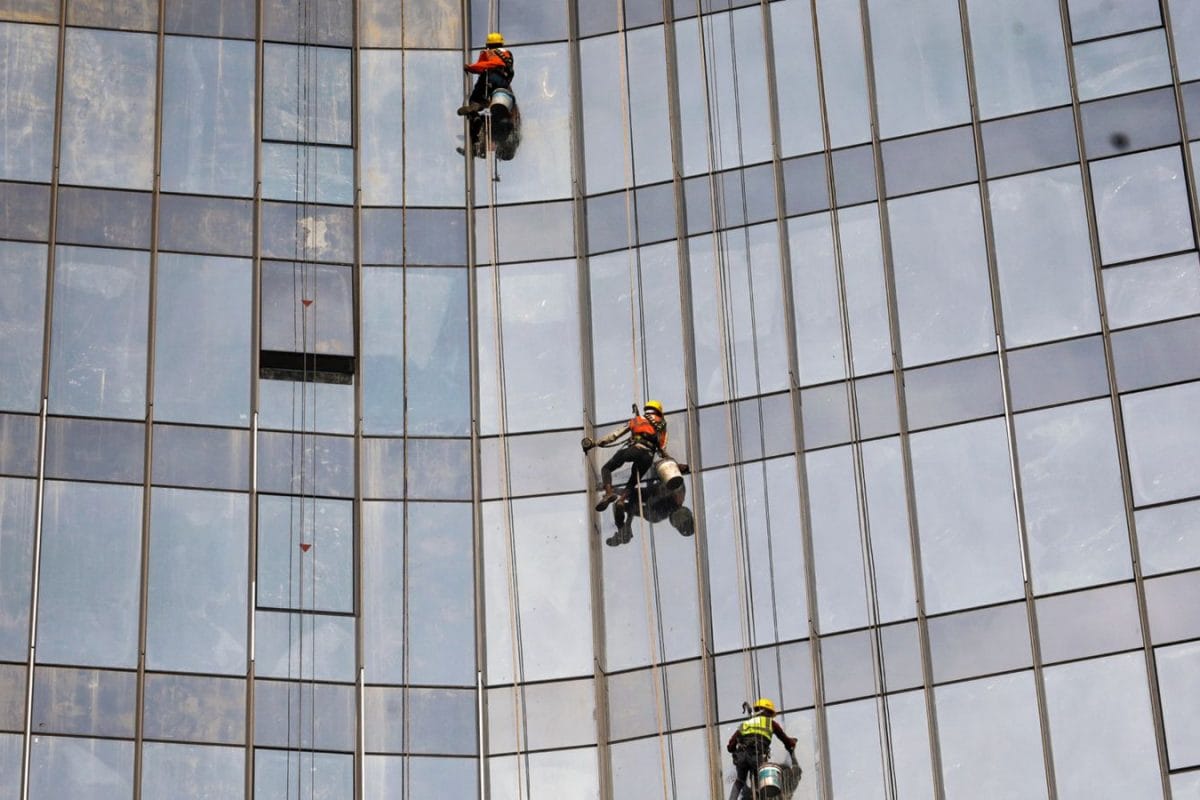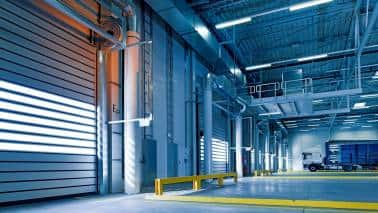If India persists in its addiction to shiny glass façades and indiscriminate air conditioning, cities risk...
Read More It’s about two campuses in Gurgaon: one is TERI (The Energy and Resources Institute), and the other is called Cybercity. They are close to each other, but from a design perspective, they might as well exist on different planets. The Energy Research Institute campus does not use air-conditioning.

Instead, it has been designed with air tunnels to cool by removing hot air and replacing it with fresh air. This keeps the ambient temperature inside the rooms in the campus at a comfortable level. Then there is Cybercity, where multinational companies flaunt their brand names on top of glass facade buildings, alongside jutting exhaust pipes from diesel generators on top of the buildings.
Every building is encased in glass, which makes this commercial hub a heat island. It’s almost impossible to walk around this campus, as there are no trees, and during the summer, the heat bounces off the pavements around the buildings. While trees surround TERI by design, a new lab was actually designed around the trees rather than cutting any of them.
As the glass buildings trap heat inside, the air conditioning further throws hot air into the street. Walking next to these buildings during any season is impossible, as the radiated and reflected heat and light are unbearable. The glass manufacturers have not given up.
They are selling higher-glazed glass to even the new buildings that were built last year. It seems as if the builders do not want to learn anything from the TERI campus next door. Now, the many companies that inhabit the buildings in Cybercity all have ESG targets, including reducing their carbon footprint.
But they continue to occupy these buildings, which take ten times more energy generated by diesel generators to keep them cool in summer, and even in winter, they need air conditioning to keep the air circulating. Design disasters and energy disasters: These buildings beat all principles of design into submission by creating deep cave-like structures that have neither air circulation nor heat dissipation. These design disasters are seen as modern or ‘cool’ when unsuitable and outdated, even in the Western countries where they are copied from.
Buildings cloaked in glass façades become urban gas chambers—structures designed to trap and magnify heat, silently suffocating their occupants with rising internal temperatures and bad air. As the mercury rises, these glass-covered buildings absorb and lock heat inside, turning interiors into pressure cookers that demand enormous amounts of energy to cool. In the process, air conditioners act as exhaust vents, ejecting heat back onto streets and exacerbating urban heat islands.
Imagine being trapped inside a glass greenhouse on a hot summer day; this is the scenario faced by millions in India’s glass-clad offices. These buildings are constructed without regard for local climate realities, copied blindly from Western templates. I tried to convince an industry association whose members are both Indian and global companies, and guess what? While they publicly talk about sustainability and all the fancy words associated with it, they are not concerned about the built environment that is suffocating lakhs of their white-collar workers.
Most CXOs and even industry associations are unaware of the impact such air-conditioned hell is having on their employees’ mental and physical health. Employees dread spending days in these artificially lit, sealed heat and gas chambers, which recycle stale air, making occupants anxious and irritable. Nearly a century ago, American novelist Henry Miller described this phenomenon as an “air-conditioned nightmare".
Indian metropolises like Delhi, Gurugram, Mumbai, and Bengaluru are now living this nightmare, trapped in a vicious loop of cooling glass buildings that relentlessly heat their surroundings. Indian architects and builders have often copied building designs from US markets, where the summer season is not as long or as hot as in India. However, even there, the view of these glass buildings is changing, though its roots are deeply embedded in the culture of these societies.
Marsha Ackermann’s book, Cool Comfort, analyses Americans’ cultural embrace of air-conditioning, describing it as the product of half a century’s efforts by industry engineers and manufacturers. Ackermann points out the strong cultural and social narratives that shaped the adoption of air-conditioning, arguing that the concept was positioned as essential for progress, civilisation, and comfort despite persistent criticisms from advocates of fresh air and opponents of energy wastefulness. Studies from the Indian Institute of Science, Bengaluru, also indicate that glass-covered buildings can consume nearly ten times more energy than traditional structures.
These buildings intensify heat during the day, expelling hot air through power-hungry cooling units and radiating residual heat at night, transforming cities into enormous ovens. Modern architectural trends further exacerbate the problem. Tara Hipwood of Northumbria University highlights the spread of “deep-plan" buildings—monolithic structures devoid of natural ventilation and dependent entirely on mechanical cooling.
These designs assume air conditioning as an unquestioned necessity, resulting in interiors akin to sealed caves that rely on artificial ventilation systems. Ackermann supports a theoretical construction of air conditioning as an agent of modernity by demonstrating that it was not necessarily the hottest American cities that adopted air conditioning first but rather the most economically significant cities, thereby reinforcing the symbolism of modernity and progress. This mirrors India’s adoption of glass façade buildings, primarily in economic hubs like Gurgaon, Bengaluru, Hyderabad and Mumbai, irrespective of climate suitability.
The fascination with these shiny buildings is happening at the cost of the quality of human life. Yet there is a hopeful path forward, exemplified by IIT Jodhpur’s campus, designed by architect Sanjay Prakash of Studio for Habitat Futures (SHiFT). Demonstrating practical solutions, the campus effectively counters Rajasthan’s notorious heat without relying exclusively on air conditioning.
In its inaugural year, the campus notably didn’t need to activate air conditioning even through May, which is traditionally one of India’s hottest months. IIT Jodhpur employed super insulation and was meticulously designed to comply with super Energy Conservation Building Code (ECBC) standards, showcasing that advanced insulation and thoughtful design significantly reduce cooling demands. Existing glass facade buildings can also be efficiently retrofitted to reduce their energy use drastically.
Successful examples include retrofitting shading devices on office complexes and upgrading insulation in commercial towers. These targeted improvements successfully demonstrated 25-30 percent reductions in overall energy consumption, showcasing the potential for sustainable improvements within the current infrastructure. However, it is difficult to convince even the occupants that they can recover the cost of retrofitting these buildings in less than a year from a lower electrical bill.
The fascination with shiny buildings at the expense of health and environmental damage is a complex equation for the CXO suite to understand. Even industry associations do not understand the impact or damage they are causing to the city and their employees. Especially CXOs, who send their children to air-conditioned schools, reducing their cognitive growth forever.
The pervasive dependence on air conditioning adversely affects the younger generation, with tangible impacts on their health and mental development. Children today often attend air-conditioned schools in air-conditioned buses and spend their playtime indoors, engrossed in video games within artificially cooled rooms. Research indicates that limited exposure to natural environments and reduced physical outdoor activities negatively impact children’s cognitive growth, creativity, and overall physical health, underscoring the urgent need to rethink our reliance on air-conditioned comfort in schools.
There is no relief from this design hell, even at the policy level, because of the lobbies that dominate the standards and code for buildings in the country. The standards and code bodies are not dominated by sustainable architects but by glass manufacturers, among other lobbies. Building codes in India, such as the National Building Code (NBC) and Energy Conservation Building Code (ECBC), recommend minimizing glass façade usage.
However, these guidelines remain recommendations rather than enforced mandates, resulting in limited compliance and continued proliferation of energy-intensive buildings. The NBC primarily addresses safety and visibility concerns rather than explicitly focusing on heat capture or energy efficiency implications of glass façades. The guidelines for thermal performance and energy efficiency are outlined more comprehensively under the ECBC, which specifically targets energy-efficient practices.
However, builders always ignore ECBC norms primarily due to a lack of stringent enforcement and limited public awareness. The solution is straightforward: We must realign architectural design with ecological and climatic realities. It’s time to mandate stricter, climate-responsive building codes suited specifically to regional needs—not a single code that applies uniformly from Ladakh to Lucknow.
If India persists in its addiction to shiny glass façades and indiscriminate air conditioning, cities risk transforming from vibrant centers of life into overheated glass chambers—trapping their inhabitants in a permanent, costly, and ecologically catastrophic nightmare. However, by embracing thoughtful design choices and retrofitting existing structures intelligently, we can reclaim our urban spaces from the grip of these glass gas chambers and ensure a sustainable, comfortable future. It’s not as if there aren’t enough campuses to learn from about reducing the heat island effect, but there has to be a will to learn and implement, and policy needs to nudge this change.
K Yatish Rajawat is a public policy researcher and works at the Gurgaon-based think and do tank Centre for Innovation in Public Policy (CIPP). Views expressed in the above piece are personal and solely those of the author. They do not necessarily reflect News18’s views.
.
Politics

Opinion | Glass Facades Are Not Cool Anymore: Our Economic Hubs Are Heat Islands

If India persists in its addiction to shiny glass façades and indiscriminate air conditioning, cities risk transforming from vibrant centres of life into overheated glass chambers—trapping their inhabitants in a permanent, costly, and ecologically catastrophic nightmare















